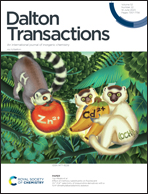Dendrite-free zinc metal anodes enabled by electrolyte additive for high-performing aqueous zinc-ion batteries†
Abstract
Rechargeable aqueous zinc (Zn)-ion batteries are regarded as a suitable candidate for large-scale energy storage due to their high safety and the natural abundance of Zn. However, the Zn anode in the aqueous electrolyte faces the challenges of corrosion, passivation, hydrogen evolution reaction, and the growth of severe Zn dendrites. These problems severely affect the performance and service life of aqueous Zn ion batteries, making it difficult to achieve their large-scale commercial applications. In this work, the sodium bicarbonate (NaHCO3) additive was introduced into the zinc sulfate (ZnSO4) electrolyte to inhibit the growth of Zn dendrites by promoting uniform deposition of Zn ions on the (002) crystal surface. This treatment presented a significant increase in the intensity ratio of (002) to (100) from an initial value of 11.14 to 15.31 after 40 cycles of plating/stripping. The Zn//Zn symmetrical cell showed a longer cycle life (over 124 h at 1.0 mA cm−2) than the symmetrical cell without NaHCO3. Additionally, the high capacity retention rate was increased by 20% for Zn//MnO2 full cells. This finding is expected to be beneficial for a range of research studies that use inorganic additives to inhibit Zn dendrites and parasitic reactions in electrochemical and energy storage applications.



 Please wait while we load your content...
Please wait while we load your content...